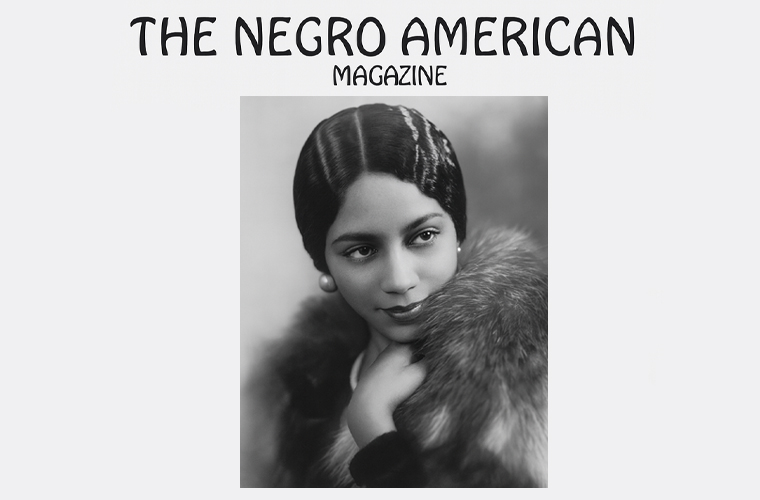A Beacon of Harlem Renaissance Culture
The Negro American Magazine, published in San Antonio, Texas, during the 1920s, was a significant yet often overlooked publication of the Harlem Renaissance era. Emerging during a period of vibrant African American cultural and intellectual growth, this magazine served as a platform for showcasing Black literature, art, and social commentary. While its reach was more regional compared to national publications like The Crisis or Ebony, it played a vital role in documenting the African American experience in the Southwest and contributing to the broader cultural movement of the time. This article explores the history, editorial vision, content, and legacy of The Negro American Magazine.
Historical Context
The Harlem Renaissance, spanning roughly from the late 1910s to the mid-1930s, was a cultural movement that celebrated African American creativity, intellectualism, and identity. Centered in Harlem, New York, it also inspired Black communities across the United States, including in Texas. The Negro American Magazine, published by the Negro American Publishing Company from 1922 to 1928, was born in this climate of artistic and political awakening. Unlike other prominent African American magazines of the era, such as The Crisis (founded by W.E.B. Du Bois) or The Colored American Magazine (1900–1909), The Negro American was unique in its Texas roots, offering a Southwestern perspective on Black life and culture.
San Antonio, during the 1920s, was a growing hub for African American communities in Texas, with a burgeoning middle class and active civic organizations. The magazine emerged as a voice for this community, aiming to highlight Black achievements, foster pride, and address social issues through a distinctly regional lens.
Founding and Editorial Vision
The Negro American Magazine was spearheaded by the Negro American Publishing Company, with R.G. May serving as editor, supported by contributing editors Dr. J.T. Walton and H.W. Greene, manager H.J. Davenport, and assistant Noah C. White. The magazine sought to capture the spirit of the Harlem Renaissance by promoting African American literature, art, and intellectual discourse. Its editorial mission is aligned with the broader goals of the Renaissance: to uplift the Black community through cultural expression and to challenge racial stereotypes and systemic oppression.
The magazine’s editorial team aimed to create a publication that was both inspirational and informative, focusing on the achievements of African Americans while addressing the social and political challenges they faced. By including contributions from writers, artists, and thinkers, The Negro American positioned itself as a forum for dialogue and a celebration of Black excellence.
Content and Contributions
The Negro American Magazine featured a diverse range of content, including articles, essays, poetry, and news related to African American culture and the arts. Its pages covered topics such as:
- Literature and Poetry: The magazine published works by local and regional writers, contributing to the literary output of the Harlem Renaissance. It provided a platform for emerging voices in Texas, many of whom might not have had access to larger, Northern-based publications.
- Art and Culture: The magazine highlighted African American artists and their contributions, emphasizing the importance of the visual arts in shaping Black identity.
- Social Commentary: Articles addressed pressing issues such as racial discrimination, economic challenges, and the fight for civil rights, reflecting the magazine’s commitment to social justice.
- Community News: It reported on local events, achievements, and milestones within the African American community in San Antonio and beyond.
The magazine’s content was designed to resonate with an educated African American readership, much like The Colored American Magazine had done earlier in the century. It sought to inspire pride and resilience while fostering a sense of community among its readers.
A notable aspect of The Negro American was its connection to other Harlem Renaissance publications. For example, a 1926 letter from the Negro American Publishing Company to The Crisis requested inclusion on the latter’s exchange list, indicating an effort to build networks with other Black publications and amplify its reach.
Challenges and Legacy
Despite its cultural significance, The Negro American Magazine faced challenges typical of African American publications of the era. Limited financial resources, a smaller regional audience, and competition from larger national magazines like Ebony and The Crisis likely contributed to its relatively short lifespan (1922–1928). Additionally, the logistics of publishing in San Antonio, far from the cultural epicenter of Harlem, may have posed distribution and visibility challenges.
Nevertheless, the magazine’s legacy endures as a testament to the diversity and reach of the Harlem Renaissance. It demonstrated that the movement was not confined to New York but had a profound impact on African American communities nationwide. By documenting Black life in Texas, The Negro American contributed to the preservation of African American history and culture, offering a regional perspective that complemented the national narrative.
The magazine’s emphasis on literature and the arts also helped nurture a sense of cultural pride among its readers, encouraging them to engage with the broader intellectual currents of the time. Its role in fostering community dialogue and showcasing Black talent laid the groundwork for future African American publications in the Southwest.
The Negro American Magazine may not have achieved the national prominence of contemporaries like Ebony or The Crisis, but its contribution to the Harlem Renaissance and African American culture is undeniable. By providing a platform for Black voices in Texas, it enriched the cultural landscape of the 1920s and helped shape a narrative of resilience, creativity, and pride. Today, it remains a valuable historical artifact, offering insights into the African American experience in the Southwest during a transformative period in American history.

